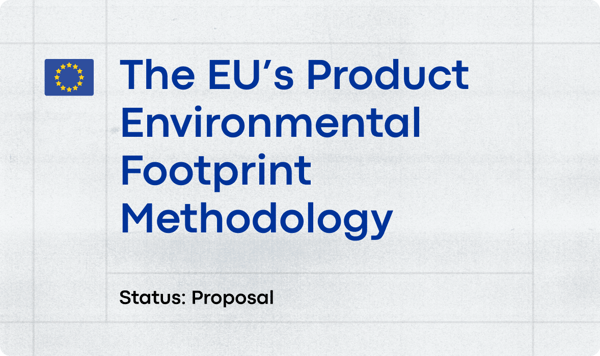Fashion brands operating in the State of California, which boasts a GDP of $4.080 trillion, will soon face major climate reporting obligations. California has leaped ahead of federal initiatives by enacting SB 253 and SB 261, the first laws in the United States requiring companies to disclose their climate impacts and risks. As with previous climate legislation in California, these new climate laws are set to have national, if not global, implications.
To clarify the current status of California's climate legislation: SB 253 and SB 261, which are now streamlined under SB 219, remain in effect. The focus for businesses should be on the regulations themselves and preparing for compliance. The 2026 reporting deadlines are approaching, and companies should be actively working to gather the necessary data from 2025, irrespective of broader political changes at the national level.
What is California’s “Climate Accountability Package"?
In October 2023, California Governor Gavin Newsom signed the two bills into law, which are collectively referred to as the California Climate Accountability Package. This package approaches corporate climate accountability from two angles:
- SB 253 mandates that all US-based large corporations operating in California disclose their Scope 1, 2, and 3 greenhouse gas (GHG) emissions, as well as other climate risks.
- SB 261 focuses on climate-related financial risks, requiring companies to assess and report how climate change could affect their business operations, mirroring elements of the SEC Climate Disclosure and the CSRD’s double materiality assessment.
Cumulatively, these new regulations are set to impact more than 10,000 companies, many of whom are footwear and apparel brands. By aligning California’s requirements with global frameworks, such as the pre-Omnibus version of the European Union’s Corporate Sustainability Reporting Directive (CSRD), these laws position the state to adopt similar climate accountability standards seen around the world.
That’s good news for brands operating internationally. For companies already preparing, or reporting on global regulations like the CSRD, compliance with SB 253 and SB 261 will feel familiar, offering a strategic advantage in navigating these new reporting mandates.
Before we dig into the specifics, let’s take a brief look at recent modifications to the Climate Accountability Package. In late 2024, Governor Newsom signed SB 219 into law, essentially merging SB 253 and SB 261, and introducing key amendments. One of the most significant changes is the extension of the deadline for the implementing authority, California Air Resources Board (CARB),to finalize regulations for disclosures.
Originally set for January 1, 2025, the deadline has been pushed back by six months to July 1, 2025. During this time period, CARB will be identifying the reporting method and where reports will be submitted to. Despite the July 2025 extension, companies will still be required to adhere to the 2026 reporting timeline.
While SB 219 refines these laws, we will continue referring to the original bills, SB 253 and SB 261, for clarity, as these are more widely recognized.
What is SB 253: The Climate Corporate Data Accountability Act?
Starting January 1, 2026, all U.S.-based fashion companies with at least $1 billion in annual gross revenue and operating in California must report their Scope 1 and 2 greenhouse gas (GHG) emissions, using data from 2025. By the following year, these companies will also need to disclose their Scope 3 emissions, which often represent over 90% of a footwear and apparel brand’s total climate footprint. This information will eventually be made public by the state on a digital platform for ease of access.
Because SB 253 focuses on comprehensive Scope 1, 2, and 3 emissions reporting, fashion companies already adhering to the GHG Protocol will be well-prepared.
In addition to disclosure, SB 253 introduces external verification requirements to enhance data reliability. Companies will be required to engage a third-party assurance provider in 2026, starting on a date to be specified by CARB. Limited assurance. which provides a moderate level of confidence based on analytical reviews and inquiries with minimal testing, over Scope 1 and 2 emissions will be required starting in 2026. This will transition to reasonable assurance, the highest level available based upon detailed assessments, control testing, and data verification, by 2030. For Scope 3 emissions, limited assurance will be mandated beginning in 2030, further reinforcing the importance of accurate climate data accounting.
Tip: Because of the complexity of Scope 3 emissions reporting, SB 253 will allow the use of secondary data in accordance with GHG Protocol standards and guidance, meaning industry-averages, proxy data, financial data, and other generic data will be acceptable in the absence of primary data from suppliers.
To ensure compliance, California legislators have given this bill teeth. Failure to comply can result in penalties up to $500,000 per year.
If you’re already familiar with GHG reporting, you’ll know that tracking emissions across complex value chains as seen in the fashion industry requires comprehensive data management. With reporting starting in 2026 using 2025 data, it's critical to start preparing now – if you haven't already.
What is SB 261: The Climate-Related Financial Risk Act?
The Climate-Related Financial Risk Act aims to protect investors from the adverse effects of climate change. SB 261 requires U.S. business entities with annual revenues exceeding $500 million and operating in California to disclose their climate-related financial risks. This broad scope means that more than 10,000 companies could be impacted. If you’ve been following US regulations, you’ll find some similarities between SB 261 and the new SEC Climate Disclosure Ruling.
Starting in 2026, companies must submit a report based on 2025 data that identifies and assesses their exposure to climate-related risks and outlines the measures they have adopted to reduce and adapt to these financial risks. If a company cannot meet all the requirements, it must provide as much information as possible, explain any gaps in the report, and detail a plan to achieve full compliance. Additionally, SB 261 requires covered companies to pay an annual fee to fund the administration of this regulation.
Climate Reports will then be submitted on a biannual basis and made public on the company website. Companies are allowed to publish parent-level reports as well as financial risk disclosures that have already been prepared in accordance with other reporting requirements like the CSRD.
The reported risks fall into two main categories: physical and transition.
- Physical risks stem from the direct impacts of climate change, such as extreme weather events, rising sea levels, or wildfires. These risks can disrupt supply chains, damage manufacturing facilities, and increase raw material costs.
- Transition risks, on the other hand, arise from shifts toward a low-carbon economy. These include changes in government regulations, technological advancements, and evolving consumer preferences.
Both of these, again, bear similarity to the CSRD’s double materiality assessment.
SB 261 uses the Task Force on Climate-related Financial Disclosures (TCFD) framework as its foundation. The TCFD was a suite of disclosure recommendations designed to help companies identify, assess, and disclose the financial risks posed by climate change. In 2023, the TCFD was disbanded and the recommendations were incorporated into the International Sustainability Standards Board (ISSB).
If you are already utilizing the ISSB and International Financial Reporting Standards (IFRS) in your financial reports, you will be ready for the TCFD as these frameworks are aligned.
The four key elements of the TCFD framework are:
- Governance – how an organization will structure its business operations in response to climate-related risks.
- Strategy – how climate-related risks will impact a company’s strategy, business operations, and financial planning.
- Risk management – how an organization will identify, assess, and manage climate-related risks.
- Metrics and targets – how an organization will measure climate-related risks and opportunities.
As with SB 253, there are penalties for non-compliance of up to $50,000 per year.
How to prepare for SB 253 and SB 261
The best way to prepare for SB 253 and SB 261 is to implement accurate and transparent carbon management systems and life cycle assessment tools. The sweeping scope of emissions reporting required by SB 253, paired with the financial insights in 261, demands a granular view of data points across your value chain. Better data not only simplifies compliance, but also supports more effective sustainability strategies. If you get your LCAs (Life Cycle Analysis) accurate across your collections, you’ll be able to use that data to report on other legislative frameworks too, which is especially relevant if you operate globally.
See our breakdowns on the new CSRD and CSDDD simplification proposal, DPP and more textile regulations here.

How Carbonfact Can Help with California Climate Laws Compliance
With California's new climate laws, brands need practical solutions – and that's exactly what Carbonfact delivers. Our platform captures the detailed Scope 1, 2, and 3 emissions data you'll need across your fashion supply chain, helping you collect the critical 2025 information required for your 2026 reporting deadlines.
We've built our solution specifically with fashion's complex supply chains in mind. Our platform follows GHG Protocol standards and works with both primary supplier data and secondary sources when needed. As reporting requirements evolve from limited to reasonable assurance, our verification system grows with you, while ensuring your data stays consistent across California's regulations, the CSRD, and ISSB frameworks.
Just remember to start sooner, not later: getting your data to the quality level required for compliance will cost time, mainly due to the complex nature of fashion supply chains. No matter what, Carbonfact will take care of all the heavy lifting for you.







 Lidia Lüttin
Lidia Lüttin

![[Guide] Carbon accounting for fashion, textile, apparel, and footwear companies](https://www.carbonfact.com/hs-fs/hubfs/CA%20-%20Opt1.png?width=600&name=CA%20-%20Opt1.png)
 Angie Wu
Angie Wu